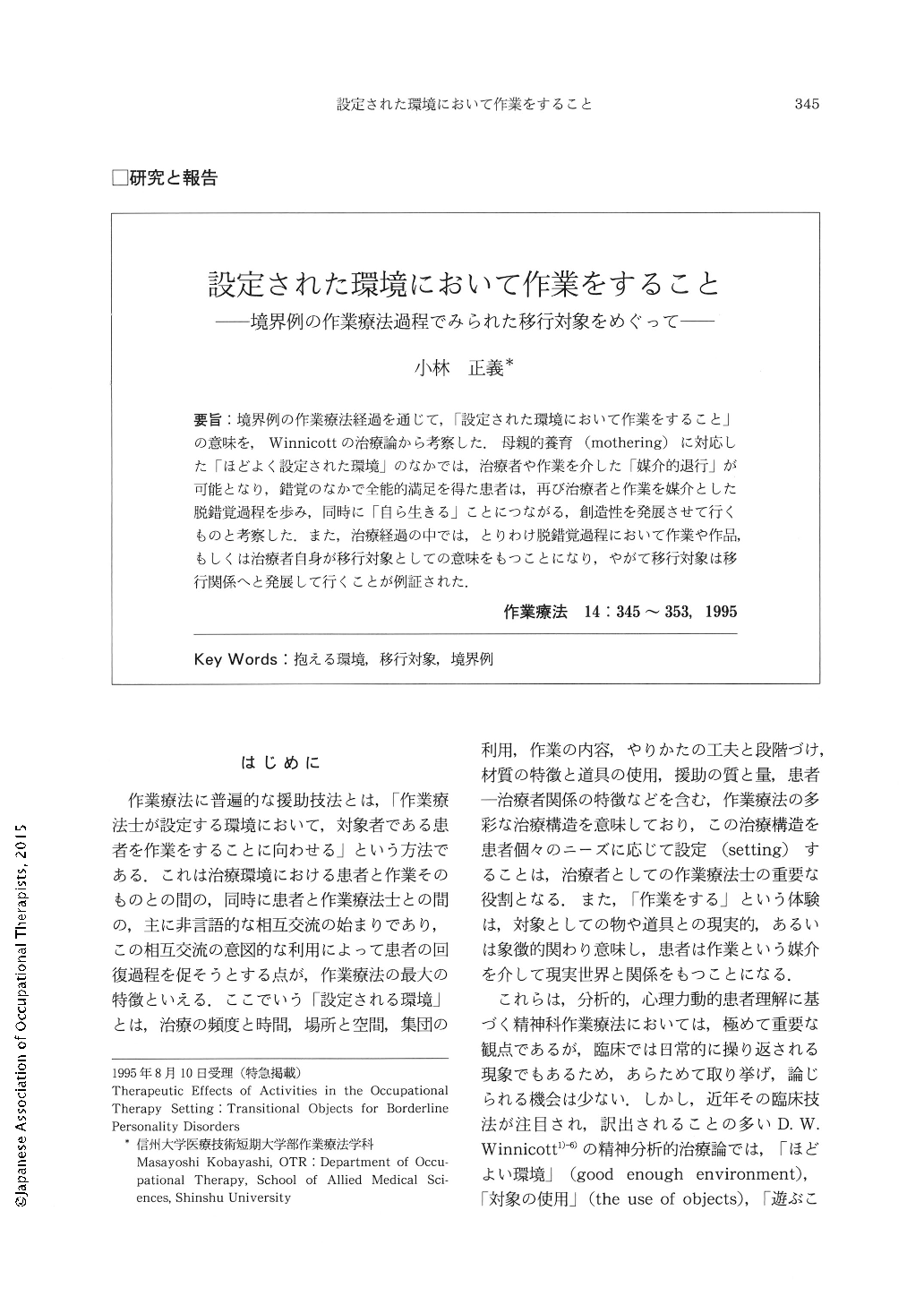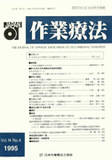Japanese
English
- 販売していません
- Abstract 文献概要
- 1ページ目 Look Inside
- 参考文献 Reference
- サイト内被引用 Cited by
要旨:境界例の作業療法経過を通じて,「設定された環境において作業をすること」の意味を,Winnicottの治療論から考察した.母親的養育(mothering)に対応した「ほどよく設定された環境」のなかでは,治療者や作業を介した「媒介的退行」が可能となり,錯覚のなかで全能的満足を得た患者は,再び治療者と作業を媒介とした脱錯覚過程を歩み,同時に「自ら生きる」ことにつながる,創造性を発展させて行くものと考察した.また,治療経過の中では,とりわけ脱錯覚過程において作業や作品,もしくは治療者自身が移行対象としての意味をもつことになり,やがて移行対象は移行関係へと発展して行くことが例証された.
The porpose of this paper is to discuss the therapeutic meaning of the occupational therapy structure in terms of transitional objects as defined by D. W. Winnicott. Two case studies of borderline personality disorders are briefly presented and discussed to illustrate the adaptive-regressive and progressive processes which are facilitated and supported by the holding environments of occupational therapy. The following are significant contributions of the occupational therapy process which may help the BPD integrate and develop his chaotic object relations.
1. The occupational therapy setting can provide a good-enough holding environment in terms of selection of activities and therapeutic relationship, which may facilitate clients' omnipotent illusion of self, objects, and therapist, leading to more adaptive regression rather than to more maladaptive and/or defensive regression.
2. An intrinsic quality of the non-human environment of the occupational therapy setting provides a context in which the client may act freely, yet be restricted to such a degree that transitional objects become a bridge between illusion and reality, me and not-me, omnipotency and creativity, and so on.
3. The crafts produced in occupational therapy, such as coffee cups and leather purses in this case, seems to facilitate the client's identification process with soothing transitional objects, which Horton defines as the transitional relatedness of an ongoing developmental process for a healthy object relationship throughout one's life.

Copyright © 1995, Japanese Association of Occupational Therapists. All rights reserved.


